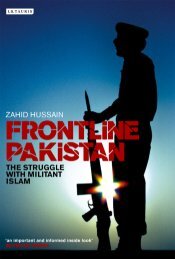Who Owns Pakistan - Yimg
Who Owns Pakistan - Yimg
Who Owns Pakistan - Yimg
You also want an ePaper? Increase the reach of your titles
YUMPU automatically turns print PDFs into web optimized ePapers that Google loves.
Nawaz Sharif was not an individual. He symbolizes a state of mind contrary to Z<br />
A Bhutto and his philosophy and thought's were born out of ashes of Bhutto's<br />
autocratic rule, particularly nationalization policy. Even if, by a magic wand<br />
Nawaz Sharif was to disappear from <strong>Pakistan</strong>'s politics, somebody like him would<br />
always be there to lead the powerful allied forces opposed to Z A Bhutto and his<br />
philosophy.<br />
It was on Oct 24, 1990, that I took first small step for the accomplishment of my<br />
self-assigned task by writing two letters, one addressed to Prof. Gustave<br />
Papanenk of the Boston University and the other to Prof. Lawrance White of the<br />
New York University. The two were well-known for their exhaustive study about<br />
the 22 families in <strong>Pakistan</strong> in the pre and post nationalization periods.<br />
In my letters I told them about my intentions to update their work and sought their<br />
advice. Papanek responded and among other things suggested that while<br />
ranking the 22 families, I should also find out the worth of their unlisted public<br />
and private limited companies, since the previous studies were based on the<br />
assests held by these groups on Karachi Stock Exchange (KSE). That was a tall<br />
order that I have accomplished only partly and hope that some other enterprising<br />
and more resourceful journalist would follow it up.<br />
Next I wrote letters to the 22 families, stating that I wanted to write about the<br />
poineers of industarial development in <strong>Pakistan</strong> and would they care to provide<br />
me some literature about their groups and ancestors who had founded them. I<br />
got only three responses.<br />
Even my bids to meet Farooq A Shaikh and Sadaruddin Hashwani who reside in<br />
the twin cities of Rawalpindi and Islamabad failed. It was only while I was finally<br />
brushing my books I managed to meet Shaikh and Hashwani, besides Nasim<br />
Saigol and Razak Dawood after hectic chase. Despite telephone calls I failed to<br />
meet Mian Mansha who was the one man I wanted most to meet because his<br />
Nishat group has emerged as <strong>Pakistan</strong>'s biggest group in my ranking. I decided<br />
therefore, at the outset that instead of trying to meet the members and leaders of<br />
22 families, I will talk to people around them, their present and former<br />
employees, officials and people in the corporate sector, who might have worked<br />
and dealt with them.<br />
I have been reporting economic affairs for nearly thirty years and have covered<br />
all the federal budges, except in 1980 when I was abroad. During 1971-77,<br />
<strong>Pakistan</strong> People's Party, government of Z A Bhutto, I had rapport with Feroz<br />
Qaisar, special assistant to Prime Minister and Rahim Jan, Chairman, Corporate<br />
Law Authority ( then called Securities and Exchange Authority of <strong>Pakistan</strong> or<br />
SEAP). They were always ready and willing to talk and listen. It was mainly<br />
through listening to them that I developed interest in the working of the corporate<br />
sector.<br />
5













